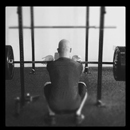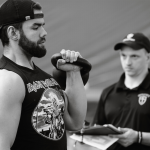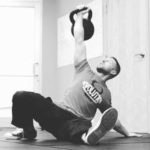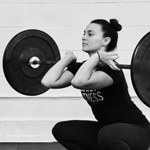Kettlebells. Barbells. Bodyweight. Three different modalities that share a common theme: they are designed to help us get stronger. We have seen across various StrongFirst Certifications—SFG, SFGII, SFL, and SFB—principles, techniques, and skills that build on one another. Getting strong in one modality supports getting stronger in every other. StrongFirst calls this the skill of strength.
What I have also found is that the foundation of many StrongFirst skills can offer valuable insights that assist in building up Olympic lifts: the barbell snatch, and the clean and jerk. Vasily Alekseyev, the multi-gold medalist Soviet weightlifter, even got his start using kettlebells (KBs) before moving on to Olympic lifting. I have been very lucky to work at a place that utilizes all of these methods and modalities to help our students achieve their goals and have seen these principles carry over time and time again.
Body Control and Coordination
Let’s start with how we learn body control and coordination for kettlebell skills, and how these are similar to that of Olympic lifts. KB skills in general— such as swings, cleans, and snatches—all require a good amount of body awareness and coordination. To build them, we begin by practicing positioning. For example, in the swing, there is the setup position, the hike position, and the top of a swing position.
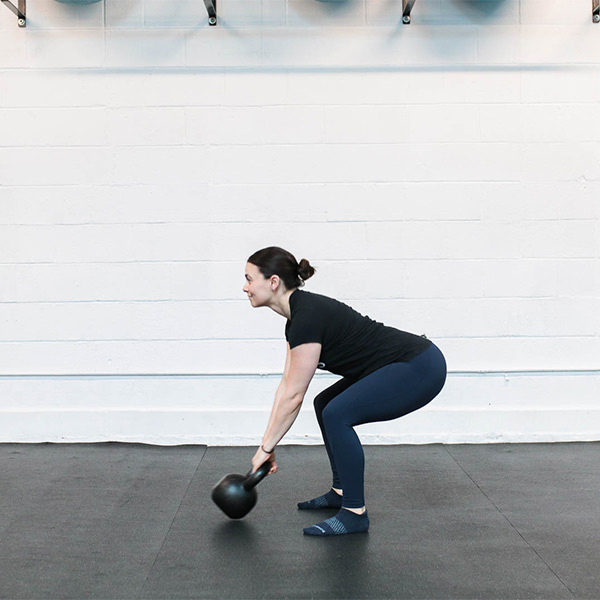
Swing Setup Position 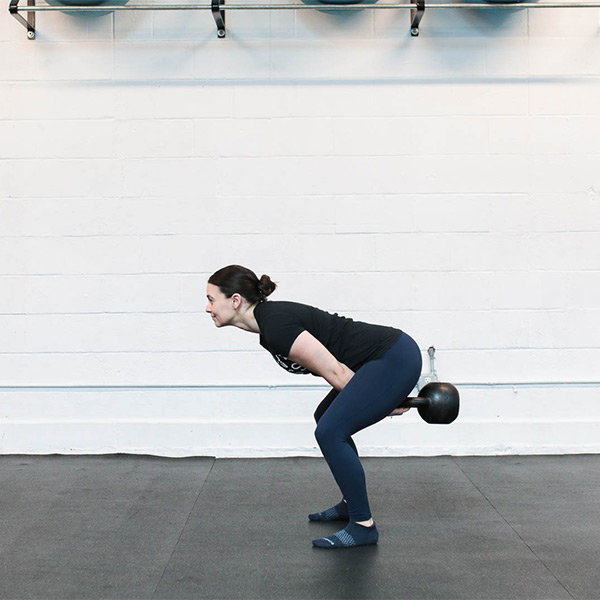
Hike Position 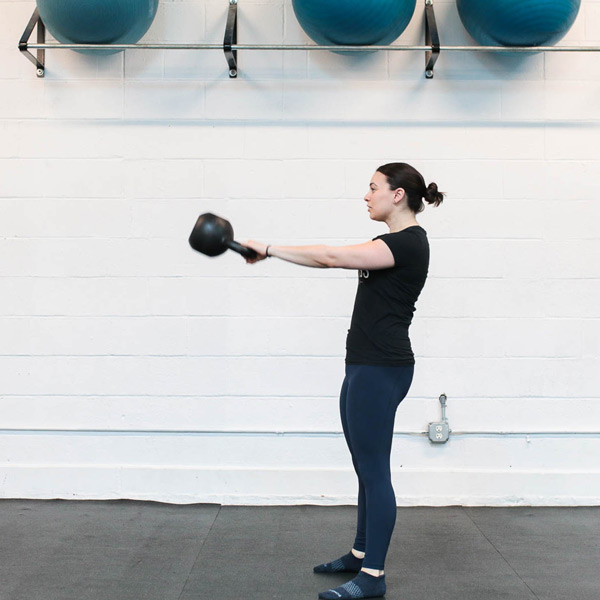
Top of the Swing
While the positions of the kettlebell swing are not identical to those for Olympic lifts, Oly lifts do require a solid understanding of each position that comes together to create the barbell snatch and the barbell clean and jerk. Ballistic kettlebell skills, in particular, have a degree of complexity that requires good body proprioception and motor control to successfully transition between positions which creates powerful and technically sound movements. Olympic lifting requires this same body awareness and coordination—with extra consideration for the even higher degree of complexity and load potential.
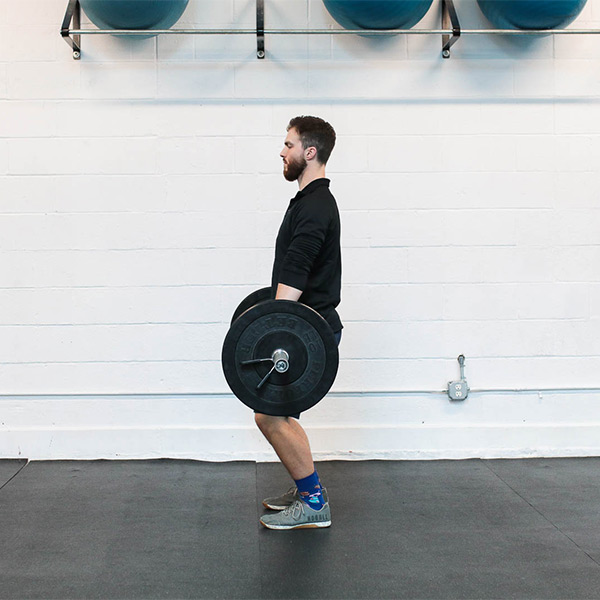
High Hang Position 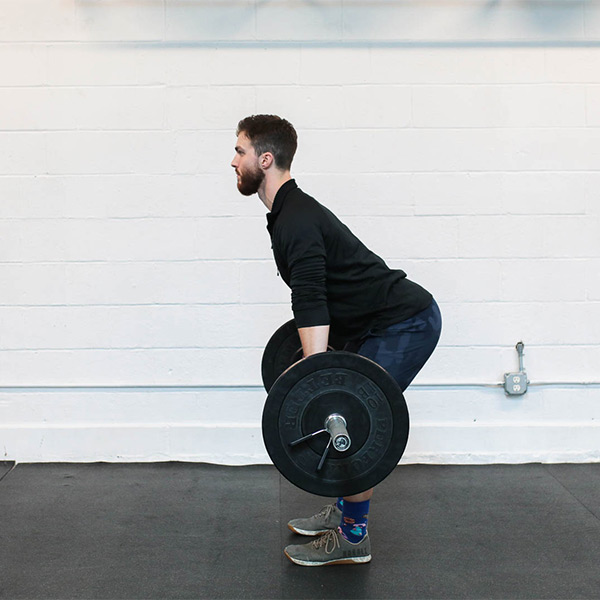
Mid Hang Position
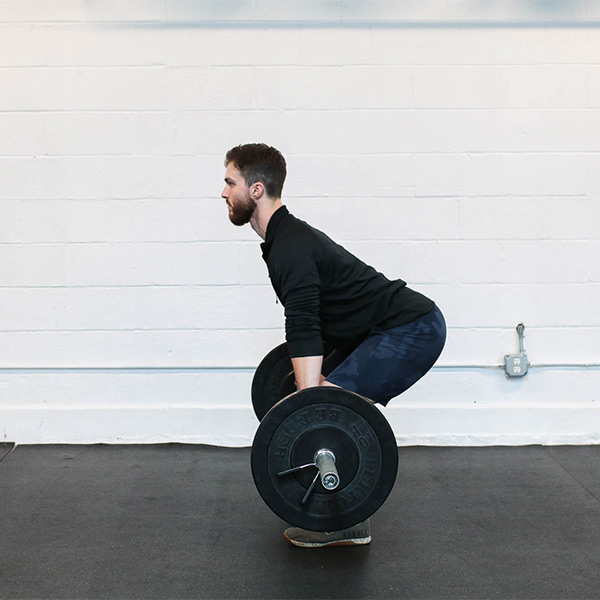
Low Hang Position 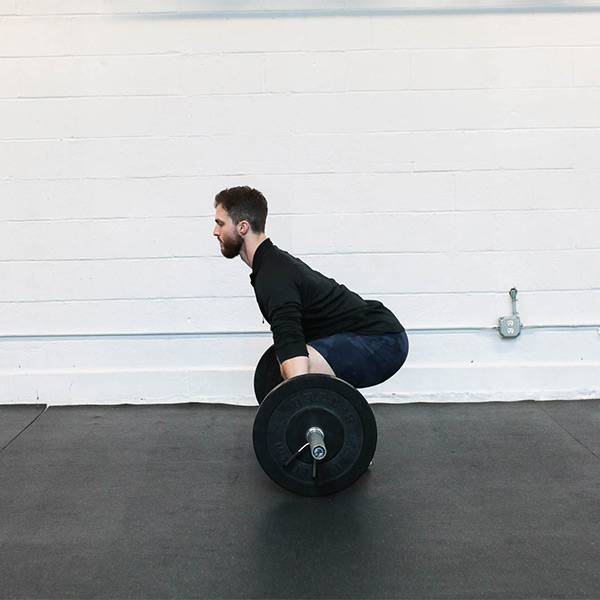
Floor Position
You may even want to use kettlebell skills as a prerequisite for building this level of body and positional awareness.
Leg and Hip Power
Another similarity between KB ballistic movements—like swings, cleans, and snatches—and barbell snatches and cleans, is that each is initiated by the power from the legs and the hips. In all of these movements, inexperienced lifters may think that a lot of the strength and power comes from the arms or upper body; but these lifts require a great deal of leg power with the right grip strength and stability. When coaching a barbell snatch or clean, it is sometimes useful to relate back to a kettlebell swing in the way that we drive through the floor to create power and lower body extension. This can help people understand how that bar gets over their head or into a front rack position.
Push Presses: Kettlebell to Barbell
Several kettlebell exercises translate exceptionally well to Olympic lifting. The kettlebell push press and push jerk are excellent tools for teaching the barbell push press and jerk, which help lead into the split jerk. Specifically, the kettlebell push press and push jerk help teach the same positioning, leg drive, trunk integrity, overhead stability and upper back, shoulder and ankle mobility needed for a barbell push press and jerk.
The first initial dip of a kettlebell push press and push jerk requires the lifter to bend from the knees while keeping the upper body completely vertical as if sliding up and down a wall. This requires solid 360-degree spinal stabilization and good ankle mobility so that energy gets maximally directed upwards. This is the same position required of a barbell push press or jerk. If the individual hinges, rather than bends from the knee, the barbell will want to fall forward, making it extremely challenging to finish the lift, if not causing a complete miss.
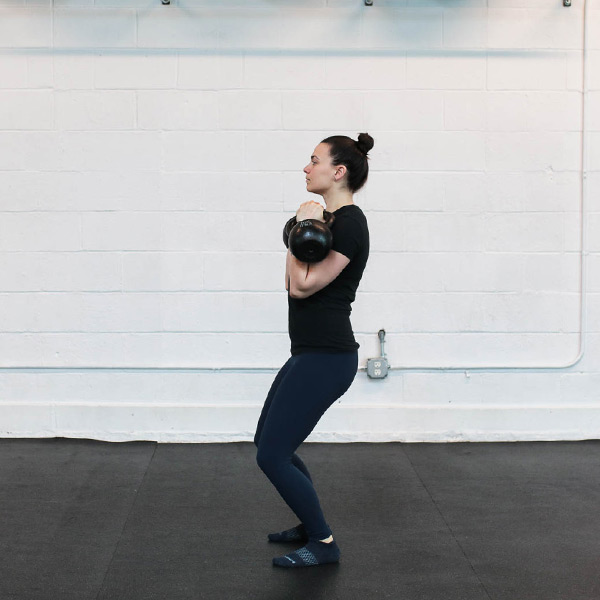
KB Push Press/Jerk Dip 1 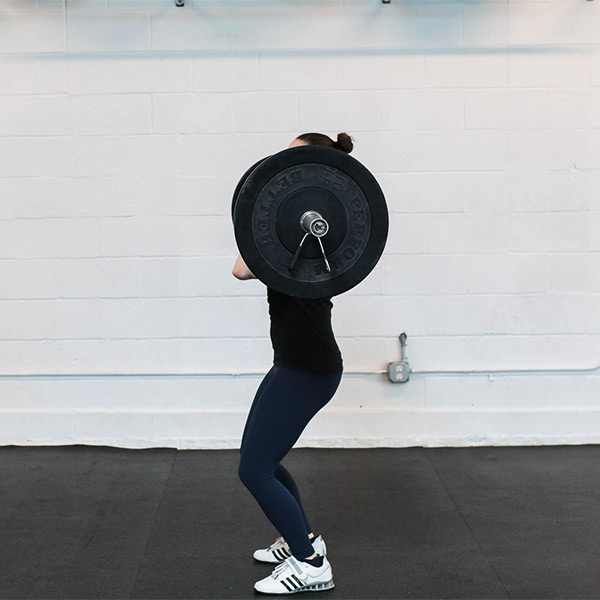
BB Push Press/Jerk Dip 1 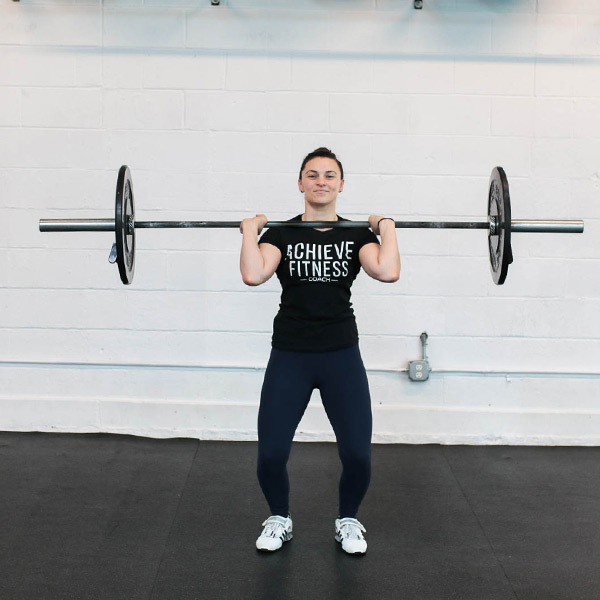
BB Push Press/Jerk Dip 1 (Front)
Next, and from this initial dip, the legs initiate the powerful extension drive which transfers through the trunk and into the arms to hoist the bells overhead. This again is the same process for a barbell. It is helpful to learn this with bells first (or even a single bell) as you can start with lighter weight to get used to the transfer of power overhead. As you get bigger and bigger bells, you quickly appreciate that you have to use more leg drive in order to get them overhead. This is helpful to learn before getting to a heavy barbell as it builds up strength and shoulder stability to press and control even more weight overhead with the barbell.
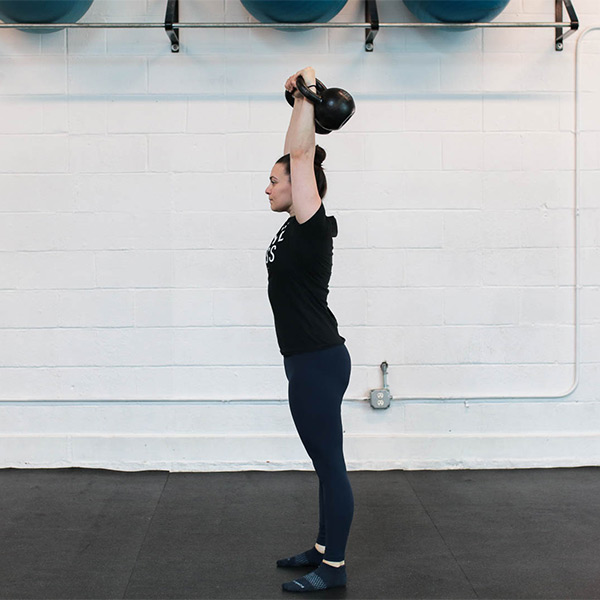
KB Push Press Top 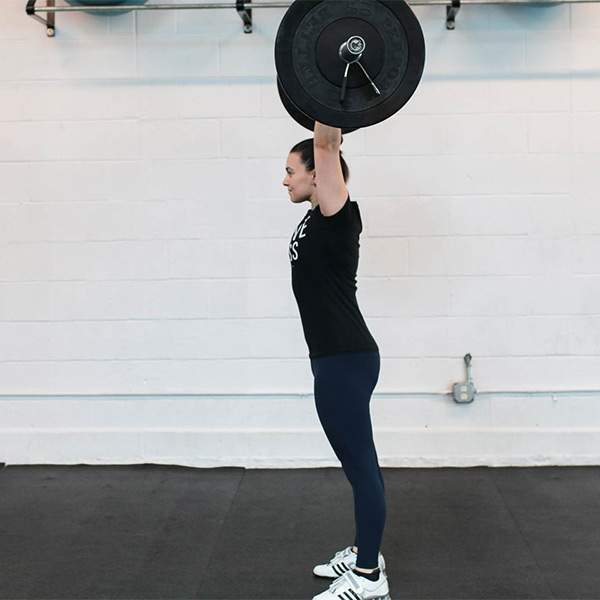
BB Push Press Top
With a kettlebell jerk, after the first dip and drive, there is a second dip. This requires the individual to coordinate dropping under the bells as they lock out their arms (in the dip position) to get the weight overhead. This double-dip jerk coordination can be tricky for some to understand and feel the right rhythm. Practicing with kettlebell first can make the barbell jerk feel much more comfortable with optimal timing. When you get to a barbell, you will be able to push more weight that requires precise technique and coordination.
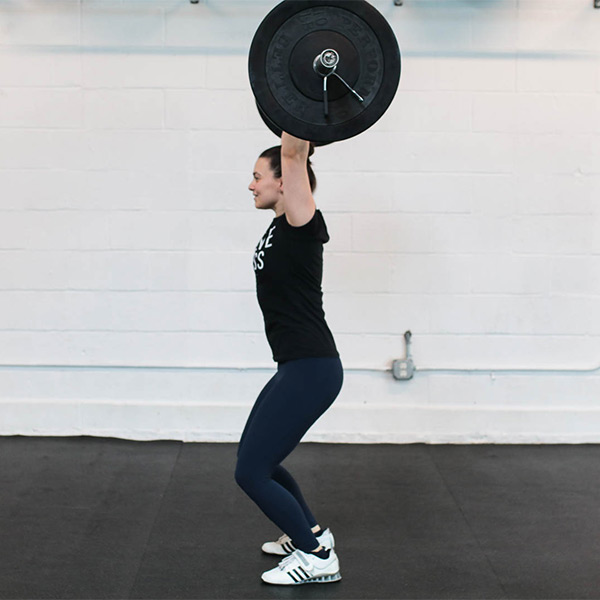
BB Push Jerk Dip 2 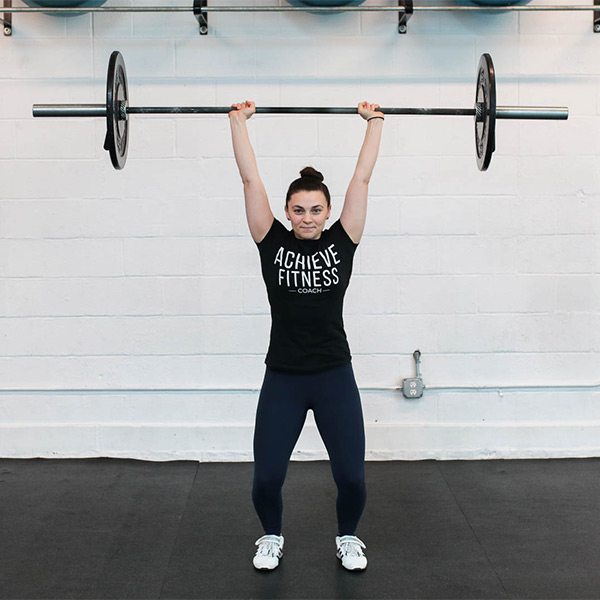
BB Push Jerk Dip 2 (Front)
Barbell Military Press
A barbell military press is also a great learning tool for helping out with push presses jerks, and even snatches. Military presses help build overhead strength as well as screen for any issues of overhead mobility and core strength limitations. If any of these are issues, better to address it here first before the movement becomes more technical and ballistic.
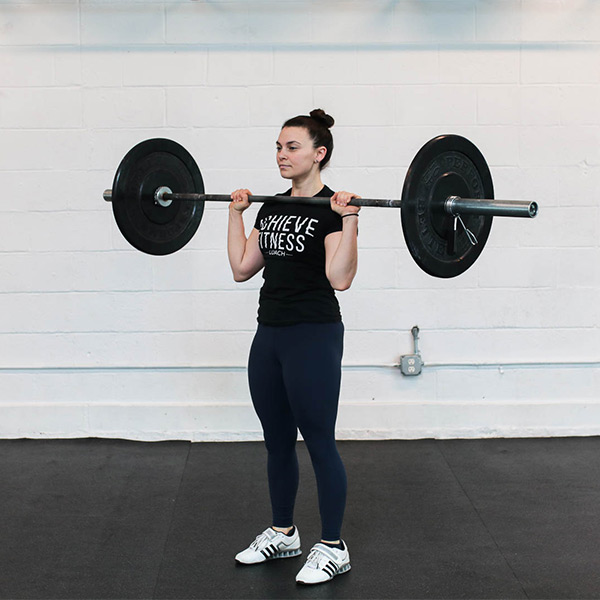
BB Military Press Rack 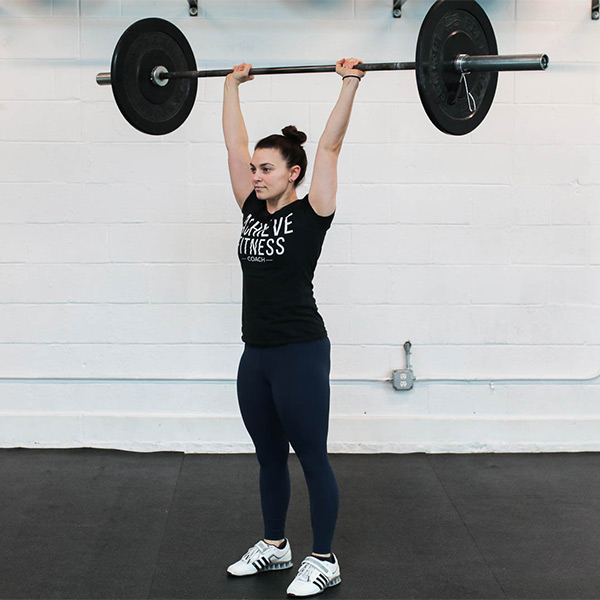
BB Military Press
Military presses create a great deal of stability in the shoulders, which help with snatches and jerks.
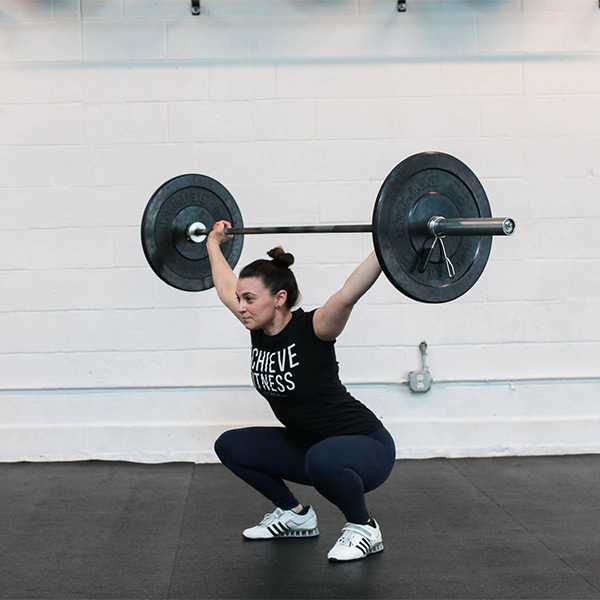
BB Snatch 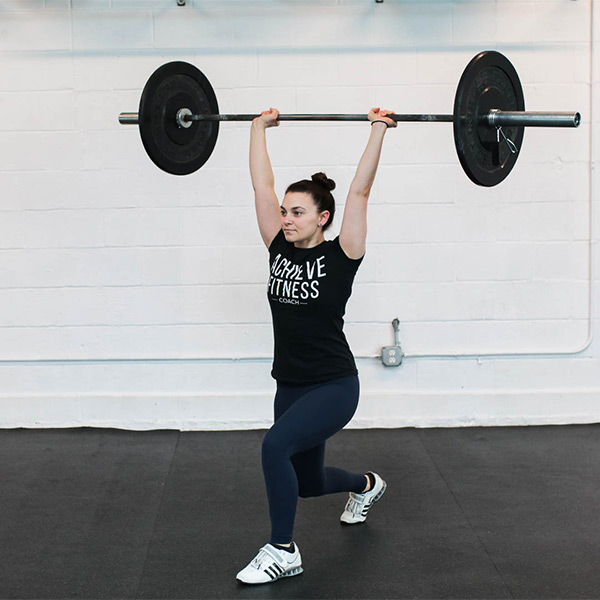
BB Split Jerk
Barbell Squats
Front and back squats are essential for all Olympics lifters! Front squats are an essential part of a barbell clean. The ending position for a barbell clean is the bottom position of the front squat. Building the mobility to maintain this position with high elbows and an upright stabilized torso is paramount in building strength in this position. The better a person can front squat, the more comfortable an individual will feel with barbell cleans. Along with front squats, back squats are also a huge part of Olympic lifting training. With so much leg power and strength needed for Olympic lifting, back squats are the pinnacle of lower body strength and the best way to build them up!
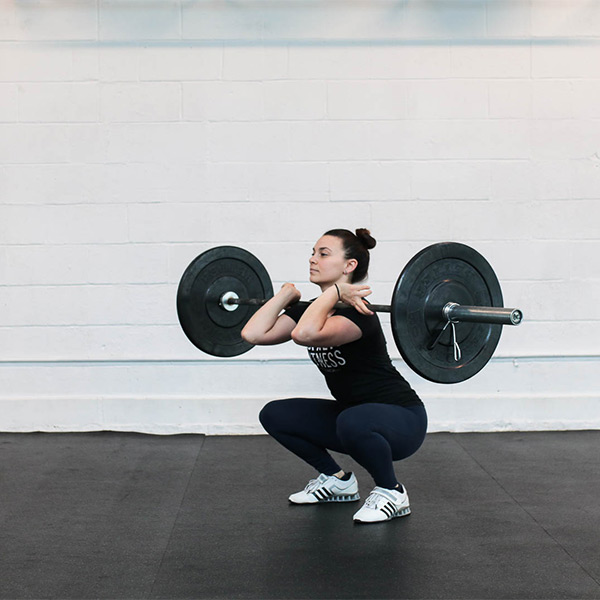
BB Front Squat 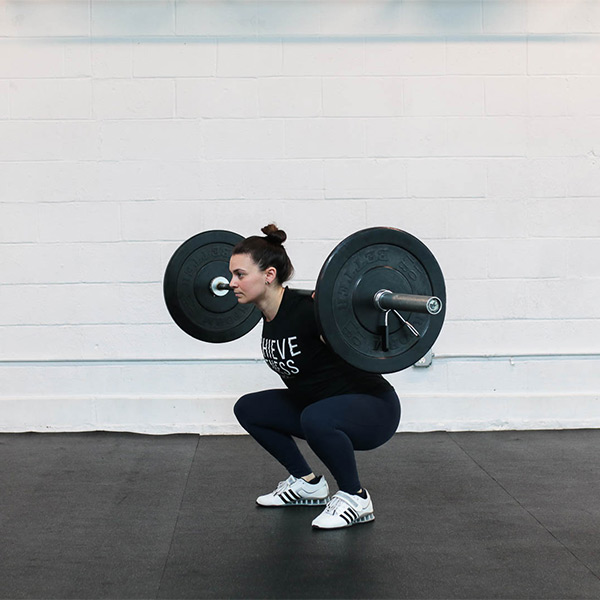
BB Back Squat
Pull-ups for Upper Body Strength and Stability
Bodyweight movements can also be super beneficial for Olympic lifting growth. Pull-ups have an excellent transfer in terms of building upper back strength and grip. While a barbell snatch initiates with the power from an athlete’s lower body, the strength to keep that bar overhead in the landing position comes from a great deal of upper- and mid-back strength, amongst other muscle groups. I personally found that my ability to snatch and snatch at higher weight increased after I spent months with weighted pull-ups. Even after stepping away from Olympic lifting for a few months, when I returned after this specific training, my snatches felt stronger and more stable in the landing position. This may not be true for all athletes, but I do think it is one way an athlete can build up their strength for the snatch’s catch position, as well as improve barbell control throughout the movement.
Wrapping up: Strength Training Can Transfer
As stated before, we do not have to be married to only one modality. We can use principles and the training from one methodology to enhance the training of another. Just as we have found that children who diversify their sports become better athletes than ones who specialize too early, I believe we should treat training similarly. By expanding how we train, we gain a better understanding of our bodies and find strength leakages we may not have previously seen. And finally, one of the best gains from training different modalities is pure fun and enjoyment. I love diving deep into a modality or combining different modalities to come out stronger overall on the other end. Whether you are looking for ways to change up your own training or looking for ways to enhance the training of your students, kettlebell, bodyweight, and barbell skills can all build upon one another to create a better base of strength for everyone. Enjoy!
